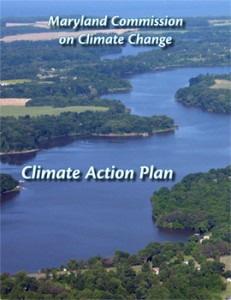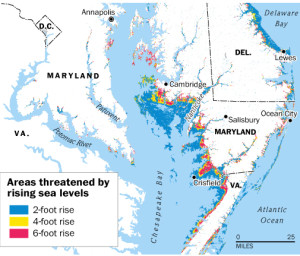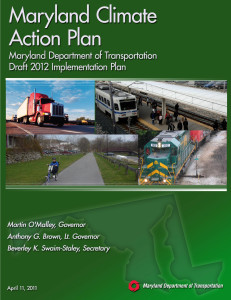 Dire warnings about Maryland climate change refuted by the latest report from the United Nation’s “Intergovernmental Panel On Climate Change” revising downward the pace of global climate change and officially admitting that temperatures have “paused” for the last 15 years.
Dire warnings about Maryland climate change refuted by the latest report from the United Nation’s “Intergovernmental Panel On Climate Change” revising downward the pace of global climate change and officially admitting that temperatures have “paused” for the last 15 years.
Jun 4, 2018 – Climate Change Has Run Its Course – WSJ
Mar 14, 2018 – Alarmists Resurrect Theory That Global Warming Is Making Winters Colder – DC
Feb 15, 2018 – Harford Council President Says He’s A Climate Change Denier – Sun
Feb 15, 2018 – Mysterious Hole In Global Warming – MDC
Nov 29, 2017 – STUDY: Satellites Show No Acceleration In Global Warming For 23 Years – DC
Sep 11, 2017 – Ozone Hole Smallest Recorded Since 1988 – EO
Jul 27, 2017 – Despite Climate Alarmism, Global Sea Levels Fell Last Year – NA
Sep 9, 2015 – Artic Has Gained Hundreds Of Miles Of Ice (Map) – RS
Jul 21, 2015 – Arctic Ice Grew By A Third After Cool Summer In 2013 – BBC
Jul 17, 2015 – Satellites: Earth Is Nearly In Its 21st Year Without Global Warming – DC
Jul 10, 2015 – Is Mini Ice Age On The Way? – Tele
Feb 7, 2015 – Temperature Data Fiddling Is The Biggest Science Scandal Ever – Tele
Feb 6, 2015 – When Liberals Ignore Science – Exam
Jul 29, 2014 – Baltimore Logs Fourth Record Low This July – Post
May 30, 2014 – Record 3100 Days Since Major Hurricane Strikes US – Post
May 20, 2014 – Baltimore Has Yet To Hit 90 In 2014 Its Latest In At Least 5 Years – Sun
May 8, 2014 – 2014 Coldest Year On Record So Far In The US – RS
Feb 20, 2014 – The Myth Of “Settled Science” – NatRev
Jan 11, 2014 – USA Saw Record Low Lightning Deaths In 2013 – USA
Dec 29, 2013 – Scientists Seeking To Prove Global Warming Stranded In Ice – DailyMail
Dec 20, 2013 – The Top Seven Global Warming Alarmist Setbacks In 2013 – DailyCaller
Dec 13, 2013 – Climate Alarmists’ Search For Proof Going Cold
Dec 5, 2013 – Global Warming Proof Is Evaporating – NYPost
Nov 25, 2013 – Slowest Atlantic Hurricane Season Since 1994 – NOAA
Nov 9, 2013 – Record Low Tornado Season For Last Two Years – USA
Oct 18, 2013 – 2013 Had The Least Extreme US Weather Ever – ClimateDep
Sep 30, 2013 – What Happened To Hurricane Season? Predictions All Wrong – Post
Sep 1, 2013 – Climate Change Reconsidered II – Summary To Policymakers – Heartland
“Since the last IPCC report in 2007, much has changed. It is now more than 15 years since global average temperature rose significantly.”

Since the first warnings of Maryland Climate Change ten years ago, the state has implemented a number of costly mandates on utilities and businesses with the promise to stop Maryland climate change. With this news from the most respected authority on this issue, the IPCC, the Governor should suspend new fees and restrictions until actual evidence of warming (not computer models) occurs.
_________________________________________________________________________
A Reprieve From Climate Doom
By MATT RIDLEY, Wall Street Journal

Later this month, a long-awaited event that last happened in 2007 will recur. Like a returning comet, it will be taken to portend ominous happenings. I refer to the Intergovernmental Panel on Climate Change’s (IPCC) “fifth assessment report,” part of which will be published on Sept. 27.
There have already been leaks from this 31-page document, which summarizes 1,914 pages of scientific discussion, but thanks to a senior climate scientist, I have had a glimpse of the key prediction at the heart of the document. The big news is that, for the first time since these reports started coming out in 1990, the new one dials back the alarm. It states that the temperature rise we can expect as a result of man-made emissions of carbon dioxide is lower than the IPPC thought in 2007.
Admittedly, the change is small, and because of changing definitions, it is not easy to compare the two reports, but retreat it is. It is significant because it points to the very real possibility that, over the next several generations, the overall effect of climate change will be positive for humankind and the planet.
Specifically, the draft report says that “equilibrium climate sensitivity” (ECS)—eventual warming induced by a doubling of carbon dioxide in the atmosphere, which takes hundreds of years to occur—is “extremely likely” to be above 1 degree Celsius (1.8 degrees Fahrenheit), “likely” to be above 1.5 degrees Celsius (2.4 degrees Fahrenheit) and “very likely” to be below 6 degrees Celsius (10.8 Fahrenheit). In 2007, the IPPC said it was “likely” to be above 2 degrees Celsius and “very likely” to be above 1.5 degrees, with no upper limit. Since “extremely” and “very” have specific and different statistical meanings here, comparison is difficult.
Still, the downward movement since 2007 is clear, especially at the bottom of the “likely” range. The most probable value (3 degrees Celsius last time) is for some reason not stated this time.
A more immediately relevant measure of likely warming has also come down: “transient climate response” (TCR)—the actual temperature change expected from a doubling of carbon dioxide about 70 years from now, without the delayed effects that come in the next century. The new report will say that this change is “likely” to be 1 to 2.5 degrees Celsius and “extremely unlikely” to be greater than 3 degrees. This again is lower than when last estimated in 2007 (“very likely” warming of 1 to 3 degrees Celsius, based on models, or 1 to 3.5 degrees, based on observational studies).
Most experts believe that warming of less than 2 degrees Celsius from preindustrial levels will result in no net economic and ecological damage. Therefore, the new report is effectively saying (based on the middle of the range of the IPCC’s emissions scenarios) that there is a better than 50-50 chance that by 2083, the benefits of climate change will still outweigh the harm.
Warming of up to 1.2 degrees Celsius over the next 70 years (0.8 degrees have already occurred), most of which is predicted to happen in cold areas in winter and at night, would extend the range of farming further north, improve crop yields, slightly increase rainfall (especially in arid areas), enhance forest growth and cut winter deaths (which far exceed summer deaths in most places). Increased carbon dioxide levels also have caused and will continue to cause an increase in the growth rates of crops and the greening of the Earth—because plants grow faster and need less water when carbon dioxide concentrations are higher.
Up to two degrees of warming, these benefits will generally outweigh the harmful effects, such as more extreme weather or rising sea levels, which even the IPCC concedes will be only about 1 to 3 feet during this period.
Yet these latest IPCC estimates of climate sensitivity may still be too high. They don’t adequately reflect the latest rash of published papers estimating “equilibrium climate sensitivity” and “transient climate response” on the basis of observations, most of which are pointing to an even milder warming. This was already apparent last year with two papers—by scientists at the University of Illinois and Oslo University in Norway—finding a lower ECS than assumed by the models. Since then, three new papers conclude that ECS is well below the range assumed in the models. The most significant of these, published in Nature Geoscience by a team including 14 lead authors of the forthcoming IPCC scientific report, concluded that “the most likely value of equilibrium climate sensitivity based on the energy budget of the most recent decade is 2.0 degrees Celsius.”
Two recent papers (one in the Journal of the American Meteorological Society, the other in the journal Earth System Dynamics) estimate that TCR is probably around 1.65 degrees Celsius. That’s uncannily close to the estimate of 1.67 degrees reached in 1938 by Guy Callendar, a British engineer and pioneer student of the greenhouse effect. A Canadian mathematician and blogger named Steve McIntyre has pointed out that Callendar’s model does a better job of forecasting the temperature of the world between 1938 and now than do modern models that “hindcast” the same data.
The significance of this is that Callendar assumed that carbon dioxide acts alone, whereas the modern models all assume that its effect is amplified by water vapor. There is not much doubt about the amount of warming that carbon dioxide can cause. There is much more doubt about whether net amplification by water vapor happens in practice or is offset by precipitation and a cooling effect of clouds.
Since the last IPCC report in 2007, much has changed. It is now more than 15 years since global average temperature rose significantly. Indeed, the IPCC chairman Rajendra Pachauri has conceded that the “pause” already may have lasted for 17 years, depending on which data set you look at. A recent study in Nature Climate Change by Francis Zwiers and colleagues of the University of Victoria, British Columbia, found that models have overestimated warming by 100% over the past 20 years.
Explaining this failure is now a cottage industry in climate science. At first, it was hoped that an underestimate of sulfate pollution from industry (which can cool the air by reflecting heat back into space) might explain the pause, but the science has gone the other way—reducing its estimate of sulfate cooling. Now a favorite explanation is that the heat is hiding in the deep ocean. Yet the data to support this thesis come from ocean buoys and deal in hundredths of a degree of temperature change, with a measurement error far larger than that. Moreover, ocean heat uptake has been slowing over the past eight years.
The most plausible explanation of the pause is simply that climate sensitivity was overestimated in the models because of faulty assumptions about net amplification through water-vapor feedback. This will be a topic of heated debate at the political session to rewrite the report in Stockholm, starting on Sept. 23, at which issues other than the actual science of climate change will be at stake.
—Mr. Ridley is the author of “The Rational Optimist” and a member of the British House of Lords.
A version of this article appeared September 14, 2013, on page C3 in the U.S. edition of The Wall Street Journal, with the headline: A Reprieve From Climate Doom.













